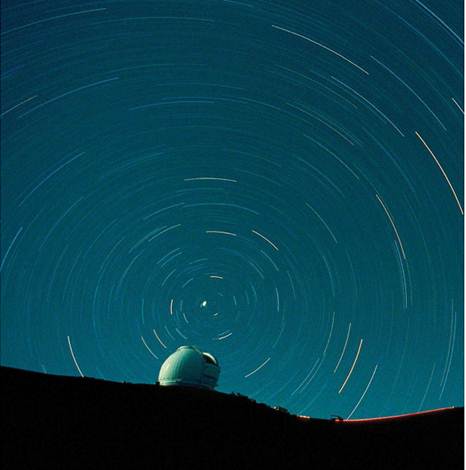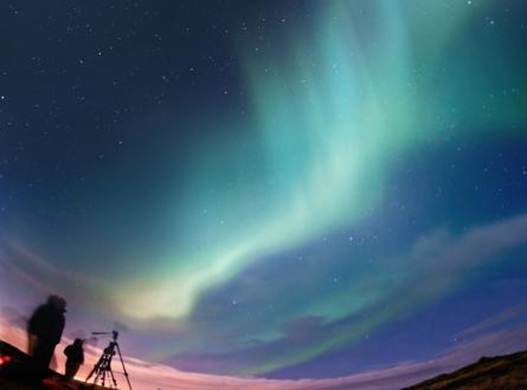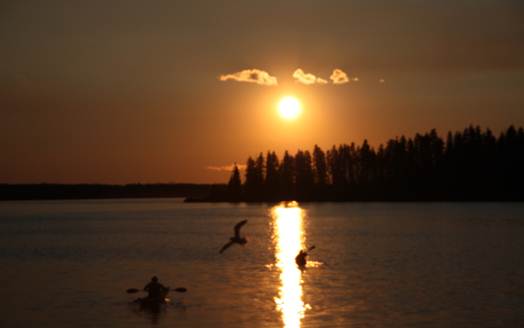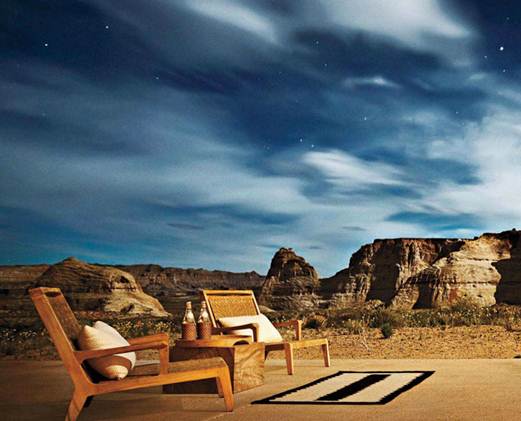The stellar mysteries of the skies have
inspired earthbound fascination for millennia. As the rare sight of the transit
of Venus approaches this summer, Claire Wrathall picks the best places to stay
and gaze at the beauty of the heavens

Stars
form arcs around the North Star above the Mauna Kea Observatory, Hawaii
Captain cook may be known principally as an
explorer of lands however the primary objective of his first voyage on HMS
Endeavour was not, in fact, to discover Australia, but to observe the transit
of Venus across the Sun from Tahiti. The timing of this rare occurrence could,
so the English astronomer Edmond Halley had posited a century earlier, be used
to calculate the distance of the Sun from Earth. Cook’s measurements, along
with those by 137 other observers around the then-known world, led to the
conclusion that it was 92,955,807.3 miles, a figure now called an “astronomical
unit”.

the
transit of Venus across the Sun
That transit of Venus occurred on 3 June
1769. This summer it is due to happen again, between 5 and 6 June, for only the
eighth time since 1631, when Johannes Kepler predicted it would first occur.
And once again, the Pacific will be the best place from which to view it. (It
takes about six-and-a-half hours for Venus – visible as a tiny black dot – to
travel across the face of the Sun.) The UK specialist operator Explorers
Astronomy Tours (www.astronomytours.co.uk)
recommends the higher slopes of Mauna Kea volcano on Hawaii’s Big Island as the
optimum place from which to watch it (wearing “eclipse shades”, it should go
without saying). The company is running a 10-day trip (from $6 per person),
including a tour of the Mauna Kea Observatory, which has the world’s most
powerful telescope.

Explorers
Astronomy Tours
The transit may be the major event in
2012’s astronomical calendar, but wherever the conditions are right – lack of
light-spill, no cloud cover, not too bright a moon – the night sky is a
phenomenon. Deserts tend to be ideal areas from which to observe it, as are
very remote places: Easter Island, for example, or any of the 30 official Dark
Sky Preserves, Reserves and Parks (15 of them in Canada) sanctioned by
organizations including the International Dark-Sky Association (www.darksky.org) and the Royal Astronomical
Society of Canada (www.rasc.ca).

Dark
Sky Preserves
Those are not the only promoters of
stargazing. At the end of last year Alqueva in Portugal was named the world’s
first Starlight Tourism Destination by the Starlight Foundation (www.starlight2007.net), a UNESCO-supported
organization founded to promote both astrophysics and “tourist activities
related to the night sky”. Even hotels are increasingly looking to the heavens,
investing in telescopes and state-of-the-art observatories, and hiring resident
astronomers. Here are 11 of the most stellar places to stay

The
night sky over Amangiri, a 600-acre desert estate in Utah